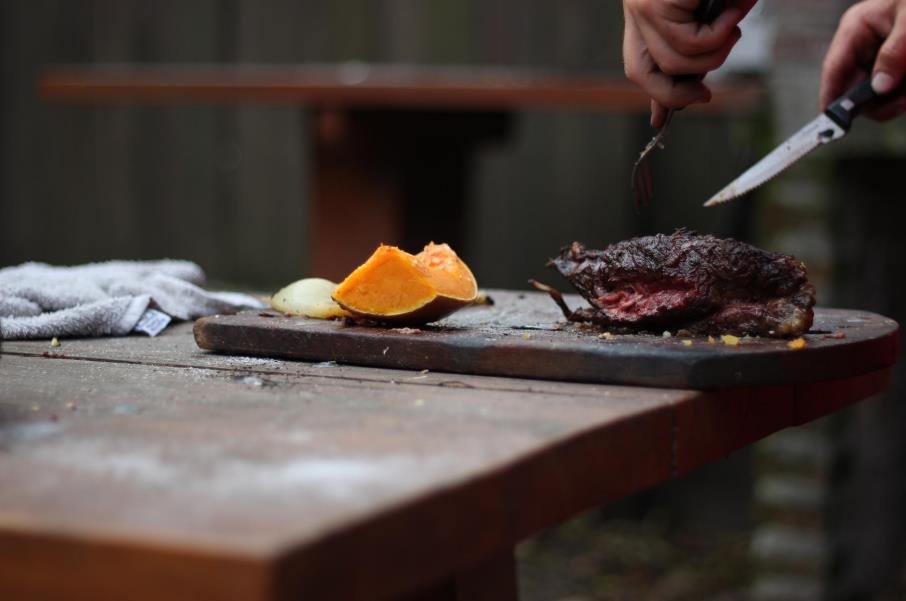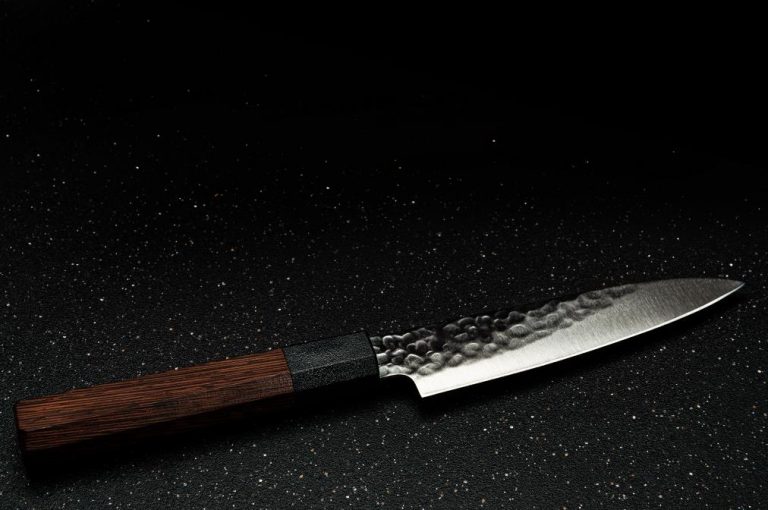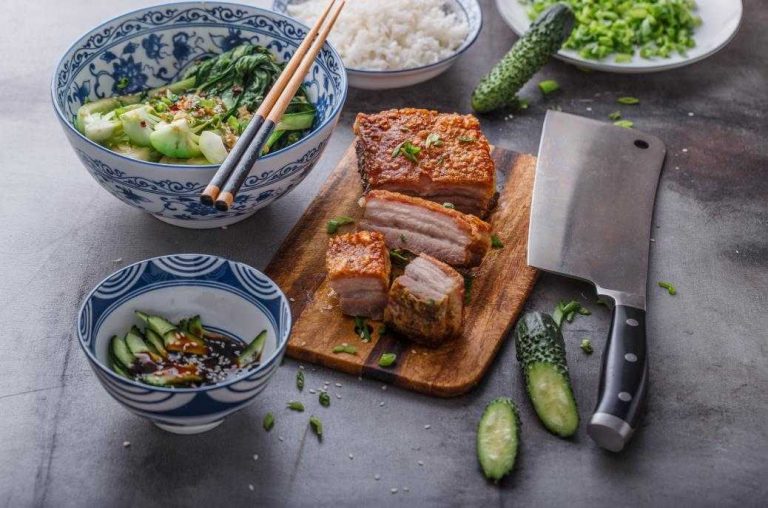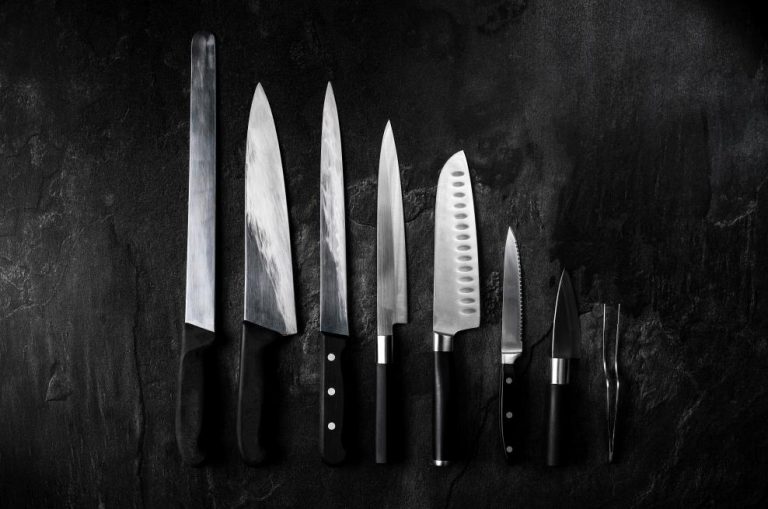Most people have a set of steak knives. Picked up cheap as part of a sales promo or given as wedding gifts, in just about every kitchen you’ll find the ubiquitous steak knife set or part thereof, usually lying in drawer somewhere.
For knife buyers that like to entertain and offer steak to their guests, or for those customers who enjoy eating steak full stop, a good steak knife grows in importance. For this reason, we’re going to answer one of the most common steak knife questions: which is better, serrated steak knives or non – serrated steak knives?
This article will show you that both serrated and non – serrated steak knives have their place and devoted adherents, there simply is no ‘one size fits all’ with steak knives, as which to buy depends on the preferences of the user.
We’ll be looking at both serrated and non – serrated steak knives; how they perform; what makes them different; pros and cons for both types of steak knife; and of course selling these steak slicing essentials in your knife store.
What is a steak knife?
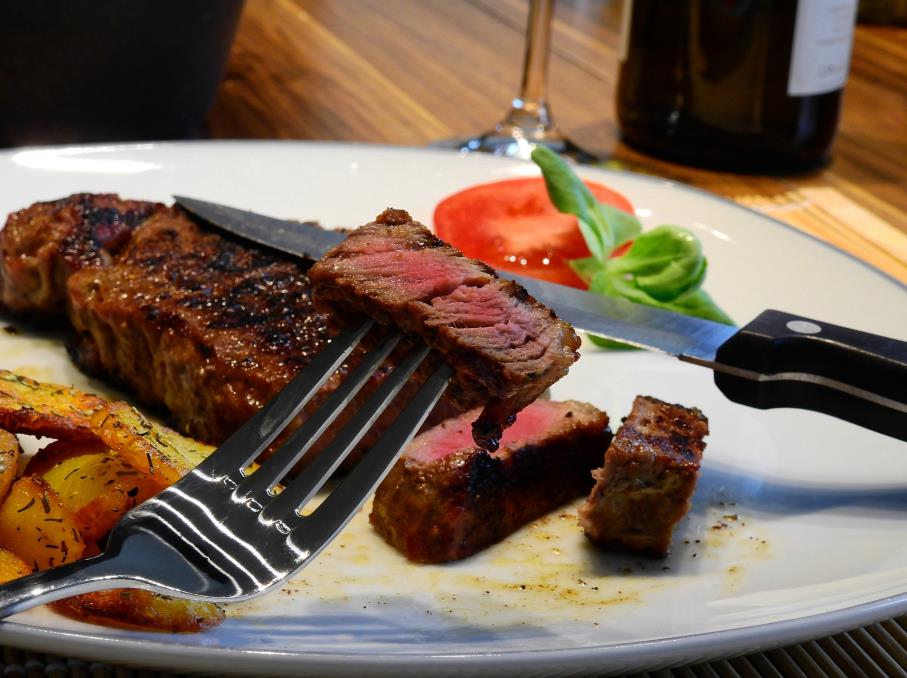
A steak knife is one of the more common household knives where steak is eaten or served and it’s roughly the size of a table knife or butter knife.
With a blade of approximately 4.5 inches in length, the usual size for a steak knife is about 9 inches in total, handle included.
Buy Wholesale Knives and Start Scaling up with Us Today
Contact us and connect with a sales rep to get a free quote.
A steak knife blade
A steak knife blade is usually made from stainless steel because it comes into contact with meat juices and stainless steel has a high resistance to corrosion. This blade material means a steak knife that can be enjoyed over the long term without damage or unsightly staining to the knife blade.
It’s a thin bladed knife, with a blade edge that can either be serrated (have tooth-like depressions along the side of the blade edge) or non – serrated (smooth sides to the blade edge).
The blade of a steak knife tapers thinner from the handle to the end of the blade, ending in a sharp or pointed tip.
Steak knife handles
You can find steak knives today with a variety of handles, this all depends on local or customer preference. Some popular handle materials are composite resins, steel, ceramics or woods.
As we recommend with all knife handles, this part of the knife is highly important and should be attractive but functional too, with good weight in the hand, comfortable balance, and durability.
Now, let’s get a little more technical!
What’s knife serration?
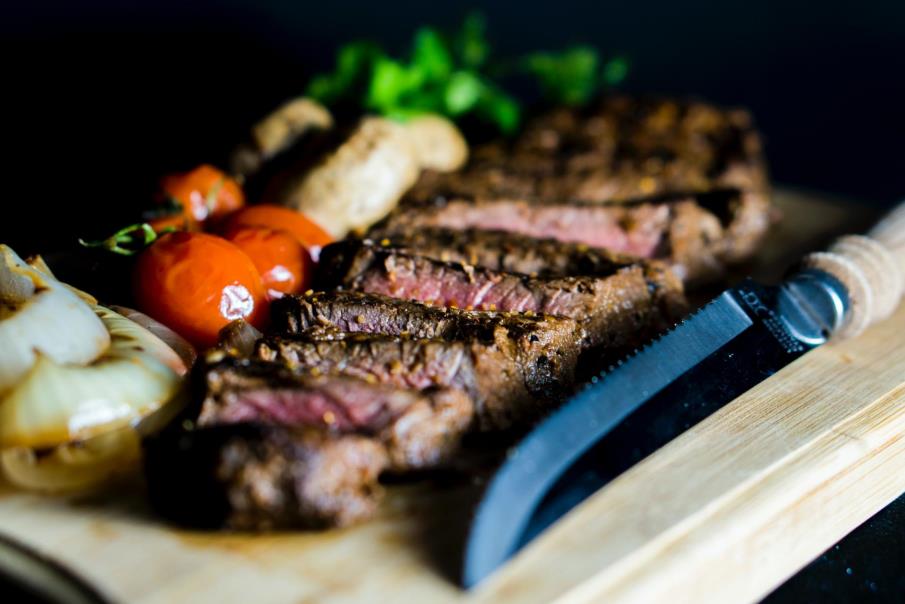
A serrated blade on a steak knife (or any knife) merely means that one side of the blade edge is concaved like the edge of a chainsaw.
Serrations on steak knives can be different shapes and sizes and spaced differently depending on how the knife blade is designed and made.
The purpose of serrations on steak knives is to add cutting power by grabbing onto and tearing meat fibers, so that the user doesn’t have to push so hard on the knife to cut through a piece of meat.
Serrated steak knives and straight edged steak knives compared!
A steak knife that doesn’t have serrations on the blade is described as ‘straight edged’ and we’re going to go into more detail on this.
Essentially, both types of steak knife will be sized and shaped the same and fulfil the same purpose, the only difference lies in the serration.
Cutting performance
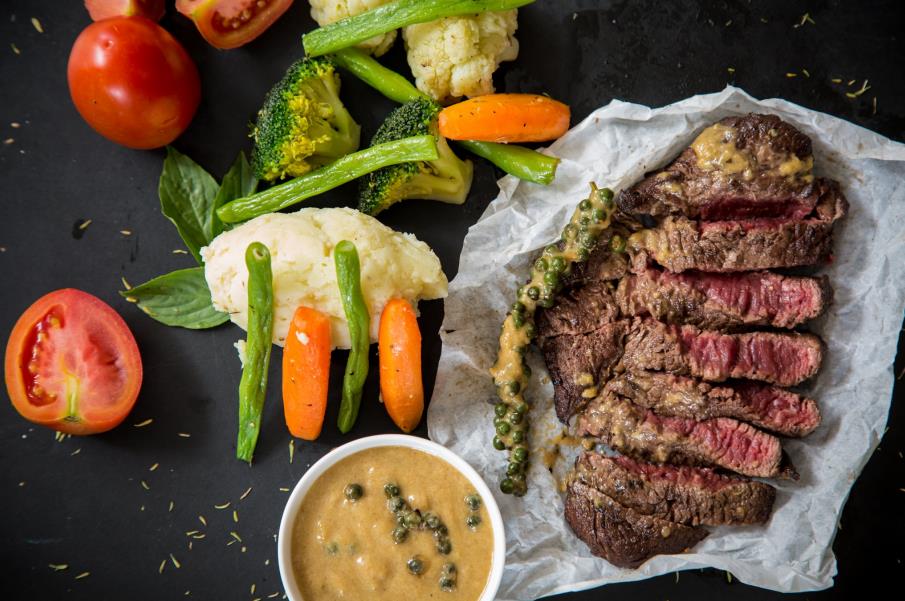
Both serrated and straight edge steak knives can give very good cutting performance depending on the quality of the knife overall, the sharpness of the blade, user preference, and the toughness of the meat being cut.
The basic differences between the two types of steak knife blade are:
- A serrated blade requires less pressure applied and will leave torn and ragged meat fibers after cutting
- A straight edged blade needs more pressure applied to slice through cleanly, but severs the meat fibers almost surgically, giving a much better presentation and visual appearance to the sliced steak
Blade and edge design
Serrated and straight edged steak knife blades are almost identical in blade design as we’ve said. The only difference is in the texture of the blade edge or lack thereof.
Maintenance
Serrated and straight edged steak knives differ quite a bit in the maintenance needed to keep them sharp and performing well, and this means considering the buyer’s sharpening skill level, their willingness to maintain the product regularly and how busy their lifestyle is.
Most customers will use ceramic plates and ceramic plates unfortunately will dull a knife edge quite quickly.
A serrated knife is more difficult and time consuming to sharpen because of the individual scalloped or indented surfaces that need to be honed with a steel/knife rod. This technique may require practice to get right.
Because of these irregularities on the blade edge though, a serrated knife comes less into contact with the plate surface, which means that it dulls less quickly, and will need only occasional honing.
The straight edged steak knife is quite different in that it’s easier to sharpen with a simple sharpening stone, but because all of the blade edge touches the plate, the straight blade edge will wear down and it will need sharpening on a regular basis.
Usage
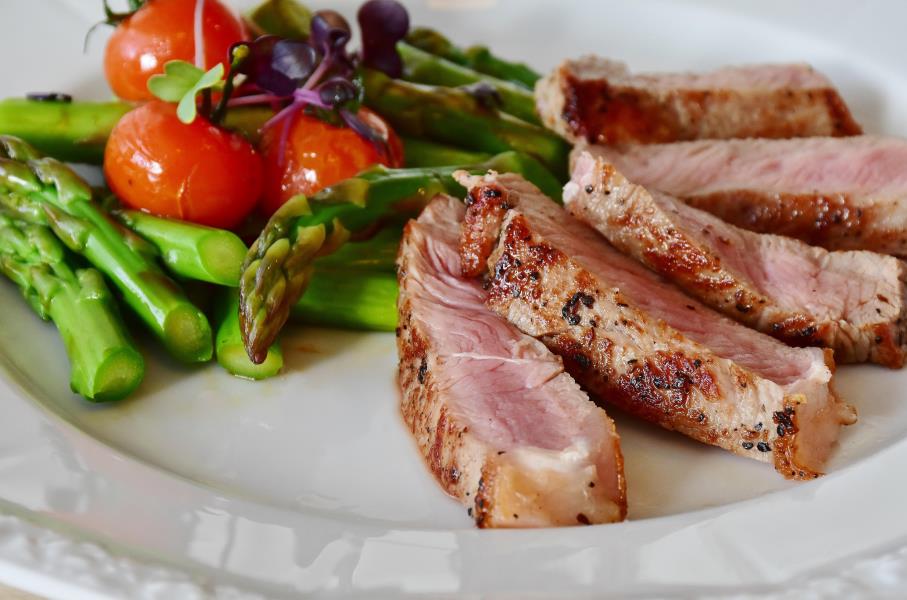
Both serrated and straight edged steak knives have the same core function: to cut up steak!
A serrated steak knife is recommended for tougher (usually cheaper) types of steak or steak that is served well done. By using a serrated steak knife the cook accepts that they are exchanging some of the presentation or cleanness of the cut for extra cutting and sawing power.
A straight edge steak knife by contrast is recommended for very tender (usually expensive) steak or steak only cooked to some degree of rare. This type of steak is soft enough that don’t need much hacking and sawing.
The upside of the straight edged knife here is beautiful, clean cuts that respect the expense, form and presentation of the meat being served.
‘Food snobbery’ level and user preference
Food snobbery is real, and we have to consider it here!
Some customers will want to just dive in and demolish their steak.
Others want a steak served in clean fine slices, or they want a tool to cut delicate slices of the steak themselves without destroying the lovely and costly piece of meat.
There is no right or wrong way to enjoy a steak, it’s all personal preference and you should try to establish which ‘place’ the buyer is coming from so that you can give them a suitable choice of products.
For customers that enjoy cutting up a steak quickly and effectively with the presentation being of little importance, recommend a serrated steak knife.
For customers who want to slice a costly steak so that it looks beautiful, you’d recommend the straight edged steak knives that cut well but also preserve the muscle structure of the meat served.
As for how long to cook a steak or at what level of ‘doneness’ it should be served, every buyer will have a different opinion and we’re not here to start WWIII!
Retaining the steak juices
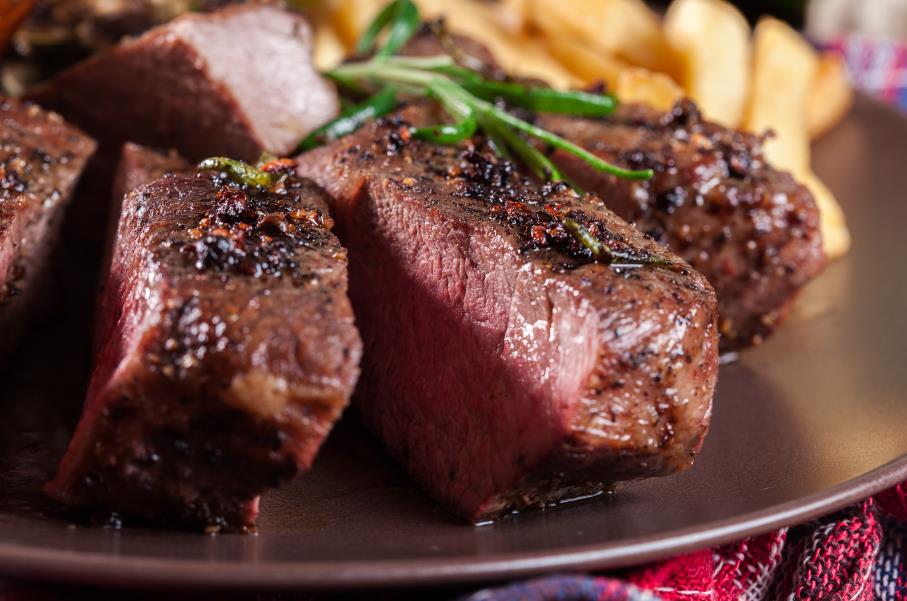
This is another contentious area, but steak aficionados seem to believe that a serrated steak knife causes a lot of the yummy steak juices to seep out because you’re sawing away at the meat and breaking it up.
For this reason, straight edged steak knives are commonly held to be superior if you want a steak that holds the moisture in it as you eat.
Again, it’s a matter of what the buyer believes, and opinions differ, which is why communication with your buyer is so critical to a successful sale.
Versatility
In terms of versatility or using them for other things besides steak, both types of steak knife can have other applications for your customers.
A serrated steak knife depending on its size is great for slicing fruits and vegetables, cutting a piece of cake neatly, or slicing a sandwich in half.
For jobs where a clean cut is desired, such as serving up devilled eggs, a straight edged steak knife gives a clean surface and doesn’t break delicate ingredients like cooked eggs.
At a pinch, a straight edged steak knife could also be used for segmenting citrus fruit if no utility or paring knife is available.
Quick table comparison: serrated vs straight edged steak knives
| FEATURE | SERRATED | STRAIGHT EDGE |
| Cutting Technique | Hacking and sawing through meat | Slicing |
| Edge Design | Dimpled with rough concavities | Smooth edge |
| Maintenance | Can be tricky – honing skill needed | Moderate but regular |
| Usage | Tough or well done steak | Very tender or rare steak |
| Food Snob Appropriate? | No | Yes |
| Juice Retention | Poor | Good |
| Versatility | Yes – sandwiches, cake, fruits & veg | Yes, delicate items like eggs, gelatin desserts, citrus |
Buy Wholesale Knives and Start Scaling up with Us Today
Contact us and connect with a sales rep to get a free quote.
Are steak knives good knives to sell in a knife store?
Steak knives and steak knife sets are so common and so often given as gifts that it would be foolish not to offer them to your customer base.
Steak knives are regarded as part of any household’s ‘dining table set’ and even if they’re only used occasionally, they’re still needed and seen as useful items.
Particularly in areas where there’s a big tradition of meat eating, barbeque or outdoor grilling, the customer base is a big one.
Many food establishments like restaurants or steakhouses provide steak knives as a matter of course along with meat dishes ordered, it’s just expected as part of the dining experience, so there’s a market there too.
If you offered a range of steak knives (serrated and straight edge) you’d be well placed to optimize this market and please your customers.
In conclusion
As we’ve seen, serrated and straight edged steak knives have their own pros and cons, and opinions vary widely as to which is objectively better.
Overall, both are great and a worthy product to sell provided that they’re of good quality and can be provided at a reasonable price.
Do check out the rest of the LeeKnives product range, and remember, a quick quote is only a click away! We look forward to hearing from you and assisting you with any knife retail queries you may have.
See you next time!
